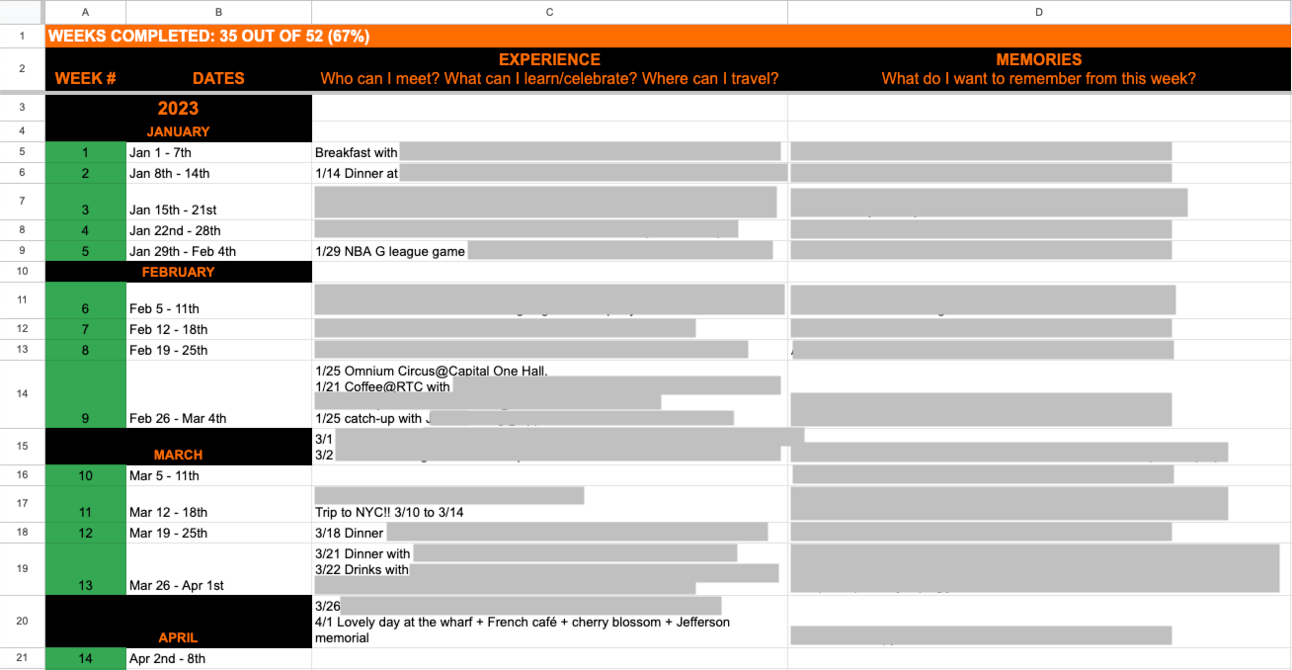Planning more experiences
A visual planning method to increase the number of experiences you have
If you’d like to have more life experiences, but find life rushing by you instead, then the power of a blank page and a few intentional minutes each week might help you change this. Here is a recommendation for a visual planning method that has worked well for me to intentionally plan more experiences.
Firstly, why optimize your life for experiences? Because research shows that prioritizing experiences over material goods leads to higher levels of happiness and satisfaction. For example, this research paper found that “spending on doing promotes greater happiness that spending on having”. Experiences can create more joyful and lasting memories than things.
What has worked well for me is creating an online spreadsheet to document and visualize my planned experiences, and later adding my memories from those experiences to it. Being able to regularly review and savor these memories makes me positively motivated to plan and anticipate upcoming experiences. Doing this for a few years now has resulted in a rich trove of joyful memories.
The specific steps for creating and using the visual planner are as follows, including a link to a template. I hope that this method helps and inspires you to add more joyful experiences to your life. As Cesare Pavese said, "We do not remember days, we remember moments".
Steps to create the visual planner:
Create: a spreadsheet with fifty-two rows (one for each week of the year) and a column each for “Experiences” and “Memories” [link to the template]
Populate: Looking at the blank sheet will spur you to add a few planned experiences. No one wants to end the year with a sparse sheet, even with the demands of work, home, kids, and travel.
Review: After each week passes, review and write a sentence about it in that row. If you didn’t plan any experiences during that week, don’t worry - just write your main takeaway. Keep it brief to make it easier.
Savor: As the weeks pass, you can look back and review your experiences, memories and upcoming plans. This will give you the motivation to add new ones in the future, creating a flywheel of positive reinforcement.
For planning experiences, I typically focus on activities that are apart from my routine. For example: meeting people that I don’t often see, organizing trips and international travel, attending shows and sporting events, signing up for learning opportunities, visiting museums, camping, beach and ski trips.
P.S. At the end of each week, you can mark its completion at the top of the spreadsheet. For example, by September 7th 35 out of 52 weeks (67%) of the year is over. This can give you a sense of urgency (my older one only has ten summers left before going off to college!)
#LikeToLearn
If you enjoyed this post, subscribe to this newsletter for content like this delivered weekly to your inbox.


